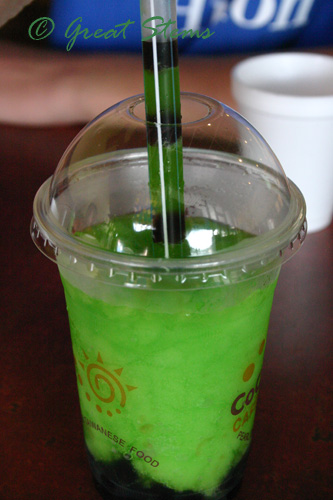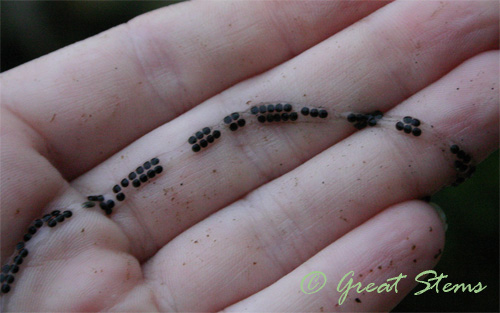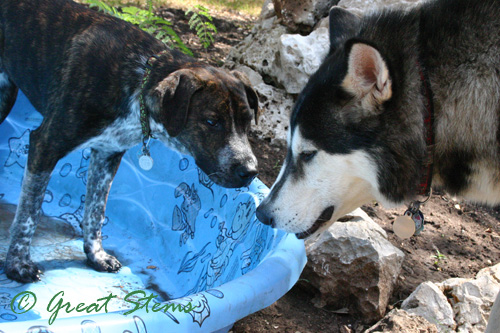Yesterday I had a very pleasant time visiting with Bob of Draco Gardens and his wonderful wife Lynn. They had me cracking up with so many hilarious stories, and they forced on me gave me some fantail goldfish for my pond. Well, to be honest, I was out there to get fish (they have a rather plentiful population at the moment), but somehow they managed to sneak more into the bucket… they claimed it was in case one of the fish died on the way home, haha. I told them that because I didn’t actually need more, that they’d all survive, grow, and make babies for me to bring back to Draco Gardens. Sure enough they all survived! More on that in a bit…
We spent a pleasant time chatting, and we got to talking about the Texas Star Hibiscus, a plant they love and one I just happen to have growing in my pond. I told them about the buds on my hibiscus that hadn’t bloomed yet, and Bob said I’d be posting a picture in my blog as soon as they did. Well, guess what I discovered today?
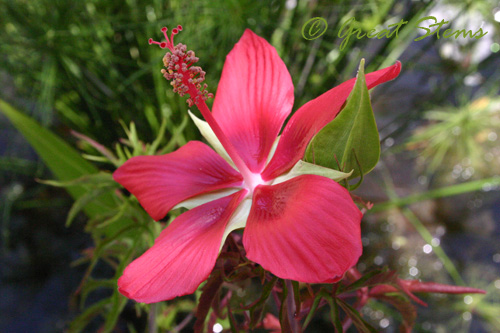
Look at that gorgeous red. The species is Hibiscus coccineus, and it’s also known as Scarlet Rose Mallow and Wild Red Mallow. It’s in the same family as the Texas Rock Rose (Rose Pavonia), and it’s native to Texas.
From a distance the leaves appear straggly to me, but close up they are quite striking. Elongated, toothed, and a beautiful combination of green and ruby… It’s interesting to note that when this plant was quite small, the lowest leaves were remarkably wide and looked almost as if they belonged to a different plant.
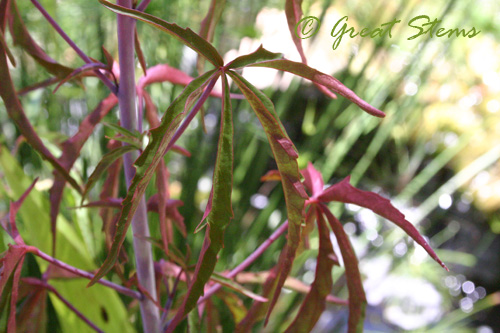
Googling for a bit about the plant, I laughed when I read that in 2004 a Houston narcotics task force raided a landscaper’s home and held him at gunpoint because they thought the Texas Star Hibiscus growing in the man’s front yard was marijuana. This earned them a Bum Steer Award from Texas Monthly magazine — for those of you not in Texas, Bum Steer Awards are given each year to the most idiotic or ridiculous people, actions, and events of the year in Texas and sometimes nationally. Not surprisingly, the list is long (and often includes politicians).
Back to the subject at hand — yes, this photo was taken at the wrong time of day, but I had to capture a picture of the tiny spider standing guard on the flower. Can you spot him?
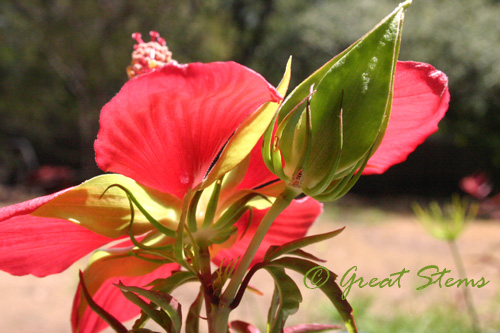
Here he is:
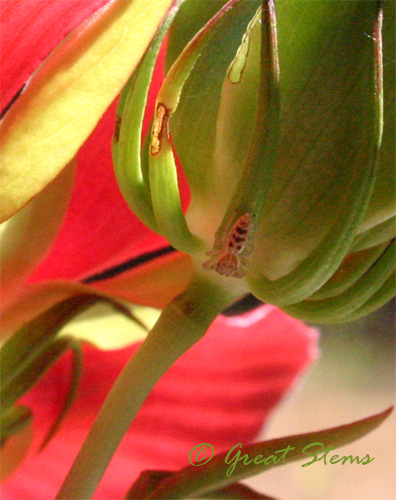 The buds on my plant are all paired. I wonder if they always appear in pairs. Even the single bloom has a bud with it, as seen in the pictures above.
The buds on my plant are all paired. I wonder if they always appear in pairs. Even the single bloom has a bud with it, as seen in the pictures above.
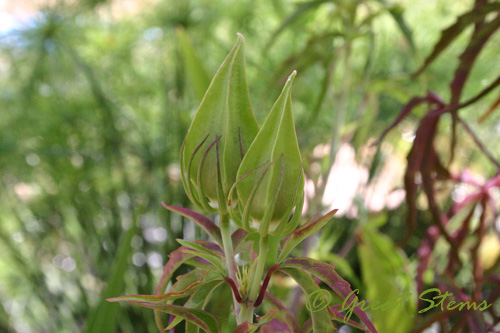
While photographing the stunning plant, I realized I was being watched by our newest amphibian resident. Being ever the romantic, it’s tempting to name him Prince, but I think instead I will call him Murray, after Bill Murray, who gets slimed by Slimer the ghost in “Ghostbusters.” Why not just call him Slimer, you ask? Because that would be too obvious, of course.
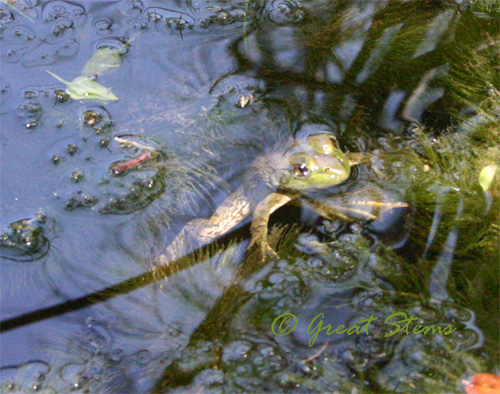
I tried hard to capture a picture of the new fish, but they scooted under foliage anytime they noticed me looming above. I enjoyed watching all the fish school around together. The new fish are quite at home. We’re now up to nine fish, egads! This isn’t a great picture, but you can see one of the wee ones swimming with the “big” fish.
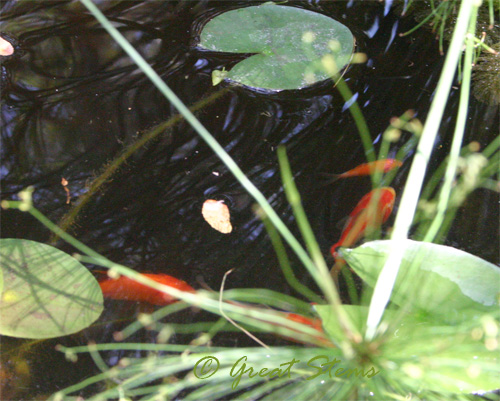
I am so jealous of the gorgeous dragonfly and damselfly pictures that many other garden bloggers get. Without a good zoom lens, I can’t close enough to take a picture without the little guys flying away, if they even land near me. And yet I am happy to have as many as will come eat my mosquitoes and wasps and even some of the plentiful tadpoles. I definitely have noticed a decrease in mosquitoes since having the pond, though perhaps that has more to do with the drought, lol. Maybe bats are visiting my pond at night now. One could hope! Do bats eat wasps and hornets?
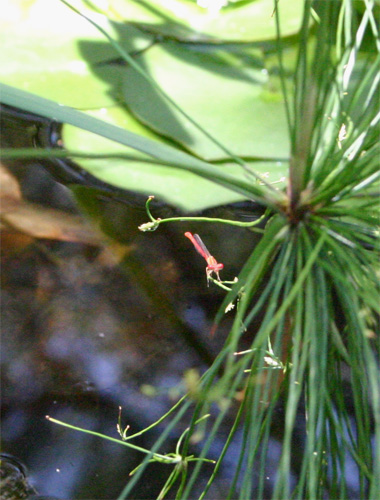 Just behind it was this caterpillar-eating menace. Can’t it just eat webworms instead of my future butterflies?
Just behind it was this caterpillar-eating menace. Can’t it just eat webworms instead of my future butterflies?
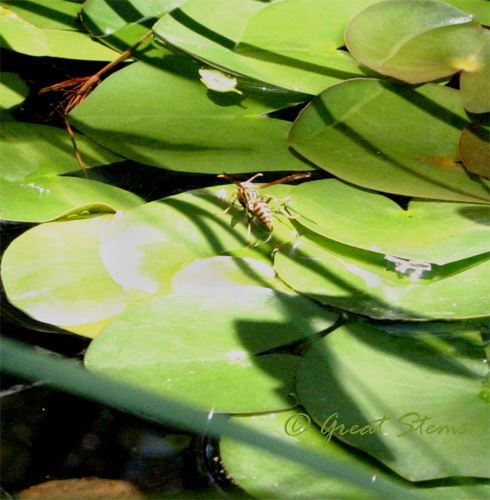
And in my garden, I found this horrifying creature, the terrifying, shriek-causing, hide-all-your-plants-from Gigantic Grasshopper — one of those that are so big they don’t bother to jump at all — they just fly their clumsy fly way out of reach. I knew I was making a mistake taking a picture of it when I should have just killed it — it got away, flying to the branches of an oak tree. Which really bugged me! (pun intended)
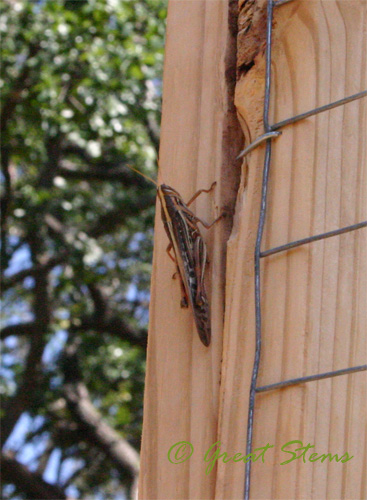
I guess that makes mine a garden of good and evil!
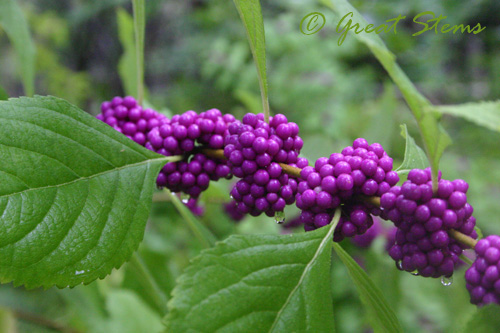 But aside from its beauty, what makes this shrub truly valuable is that it is a fall and winter food source for more than 40 different songbird species, as well as other birds. It also is enjoyed by mammalian wildlife, including the opossum and raccoon. Its deer resistance probably depends on your area and the harshness of seasonal weather. In some areas, deer leave the mature plants alone, but they’re happy to nibble on young shrubs and sometimes the berries. In general, though, it’s best to plant the shrub in a protected area if you are concerned about deer.
But aside from its beauty, what makes this shrub truly valuable is that it is a fall and winter food source for more than 40 different songbird species, as well as other birds. It also is enjoyed by mammalian wildlife, including the opossum and raccoon. Its deer resistance probably depends on your area and the harshness of seasonal weather. In some areas, deer leave the mature plants alone, but they’re happy to nibble on young shrubs and sometimes the berries. In general, though, it’s best to plant the shrub in a protected area if you are concerned about deer.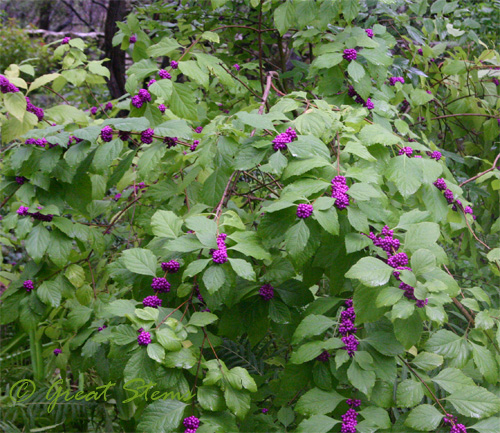 In the summer, the shrub has delightful pale flowers. But it is the beautiful clusters of purple berries that really provide that wow factor come fall. There is also a white variety, but if choosing a color most attractive to birds, I’d stick with purple.
In the summer, the shrub has delightful pale flowers. But it is the beautiful clusters of purple berries that really provide that wow factor come fall. There is also a white variety, but if choosing a color most attractive to birds, I’d stick with purple.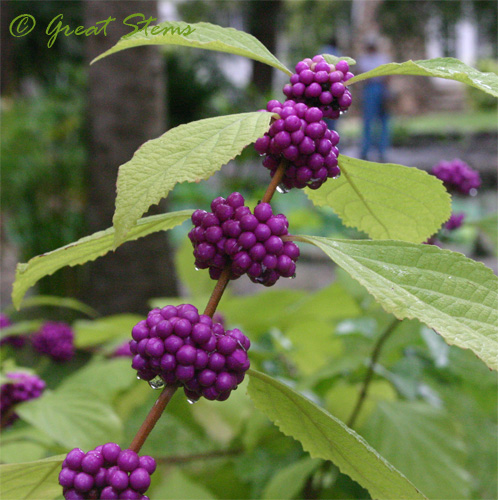 The deciduous shrub is typically 5-6 feet tall when mature, but I’ve seen some get more than 8 feet tall. It prefers partial sun/partial shade, but with extra water and attention, it can handle more sun, too. But as an understory plant, it is at its best.
The deciduous shrub is typically 5-6 feet tall when mature, but I’ve seen some get more than 8 feet tall. It prefers partial sun/partial shade, but with extra water and attention, it can handle more sun, too. But as an understory plant, it is at its best.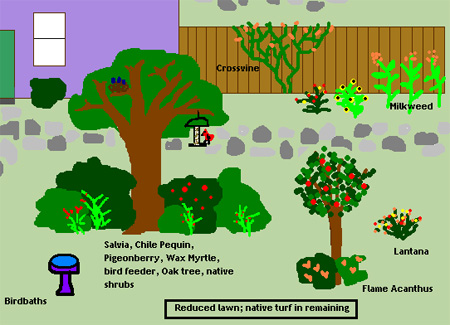
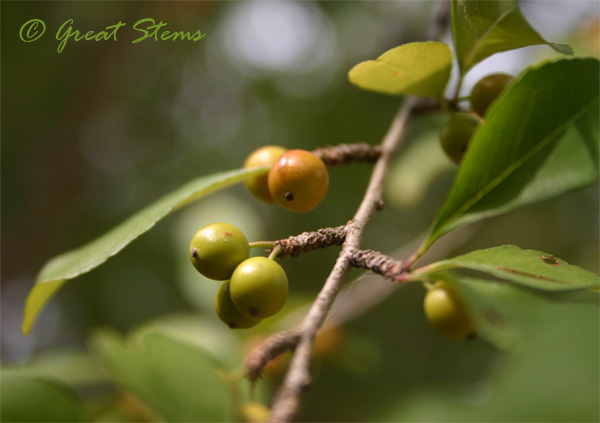
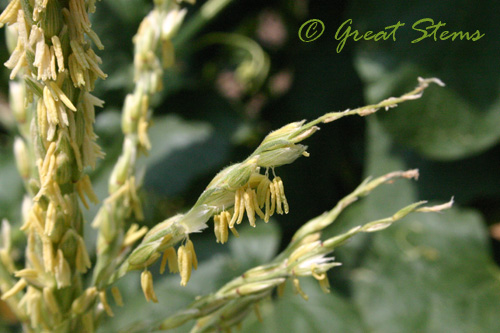
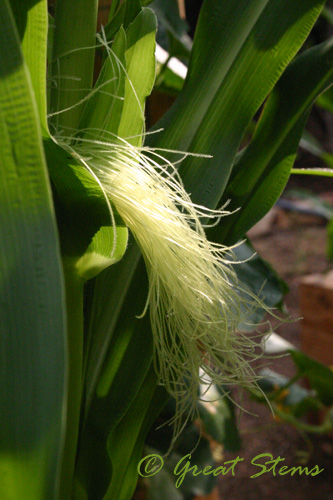
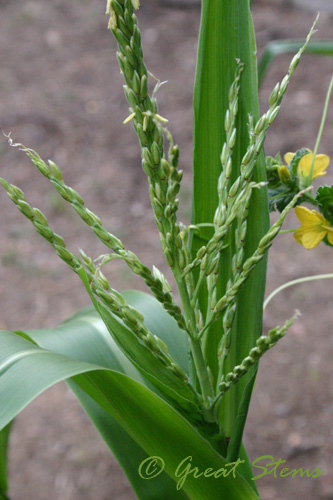
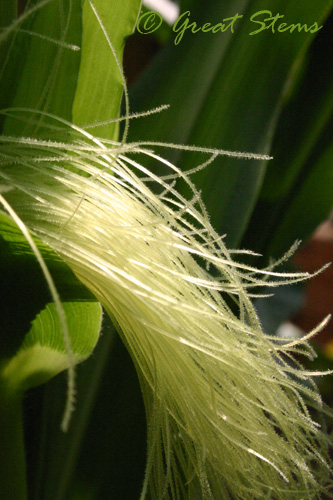
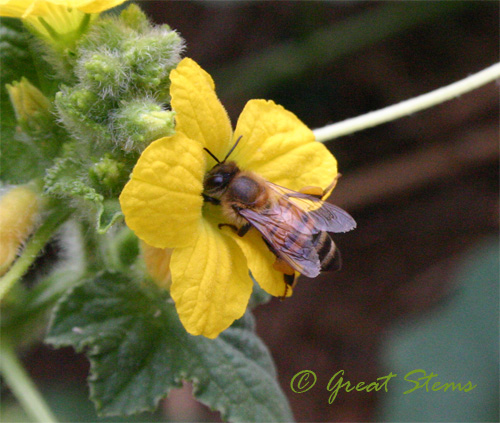
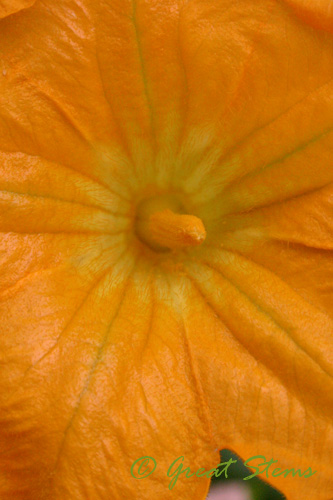
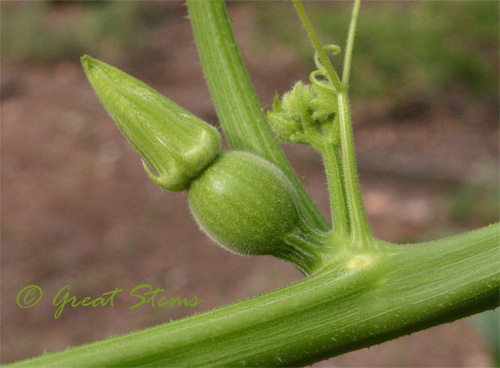
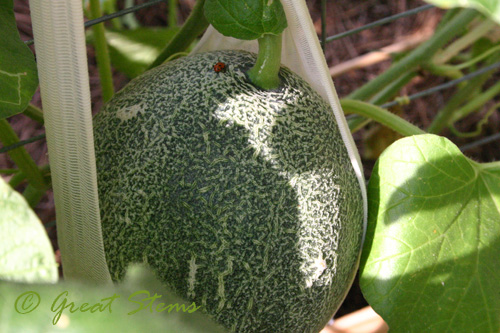
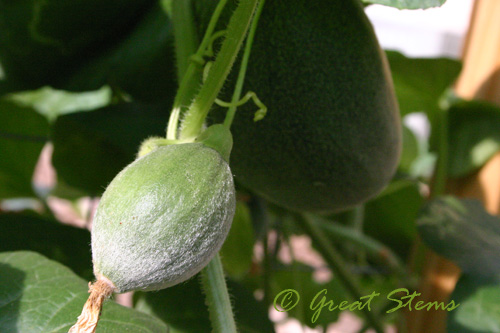
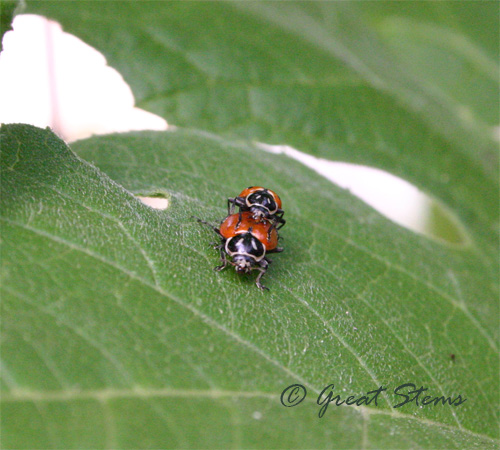
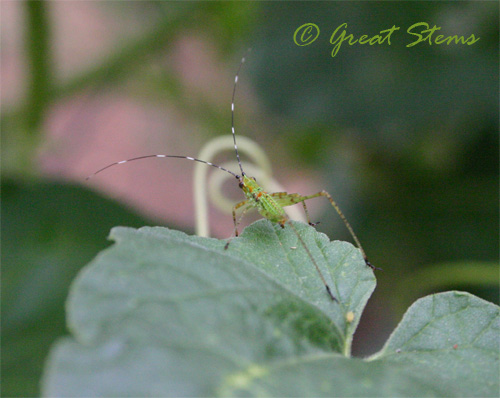
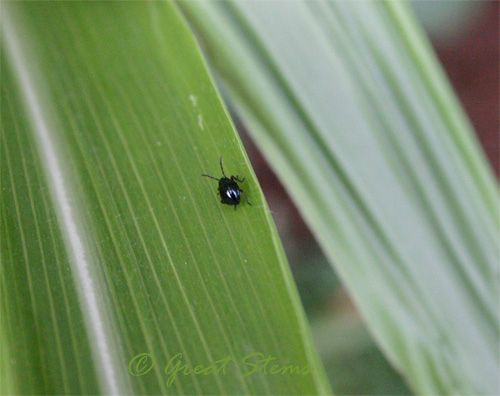
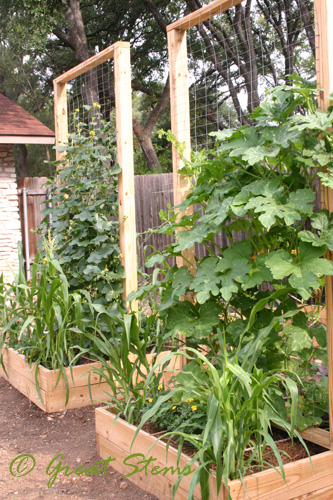
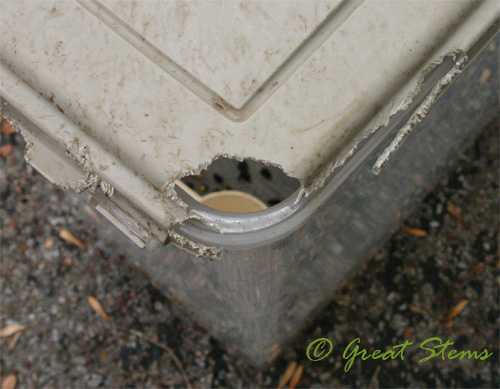
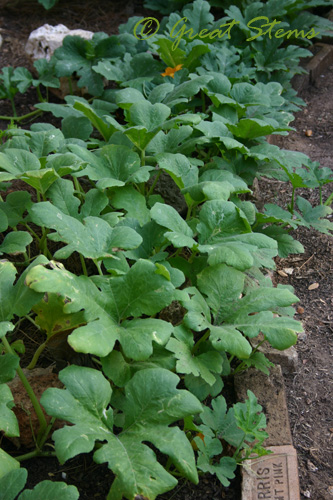
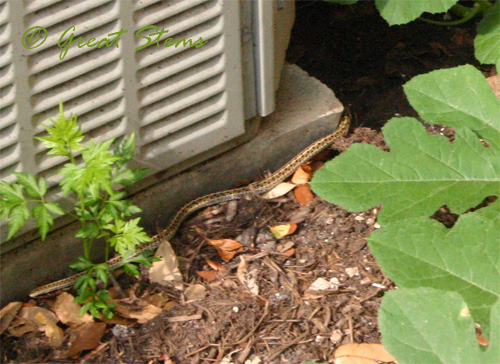
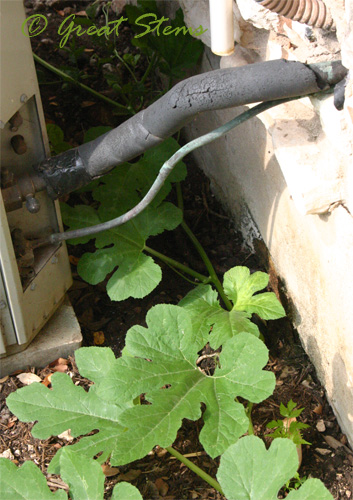
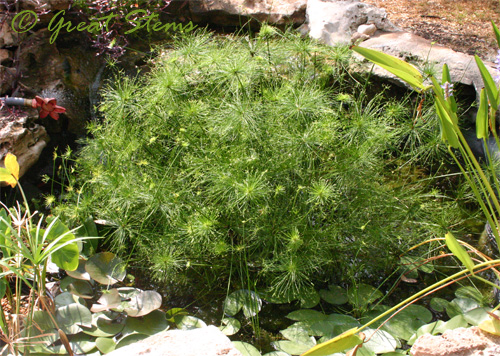
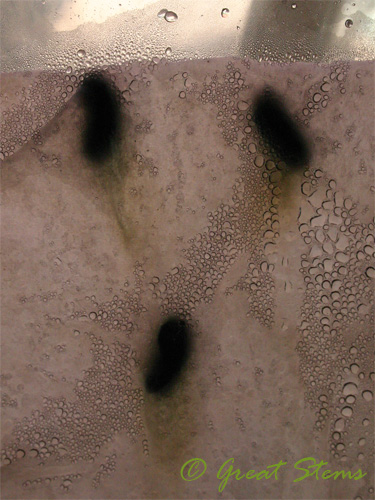
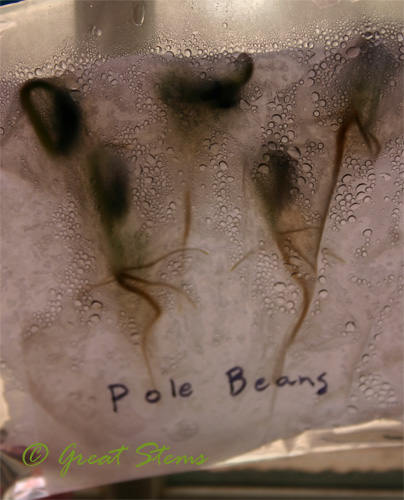
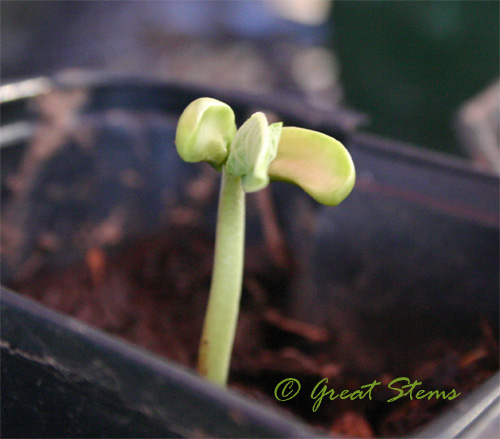 and then nestled in bed…
and then nestled in bed…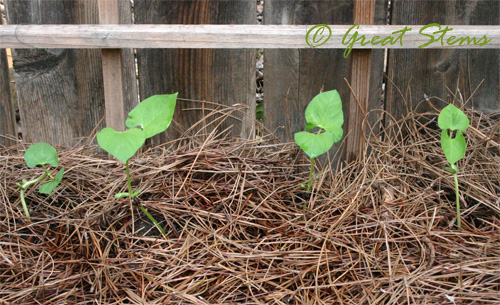
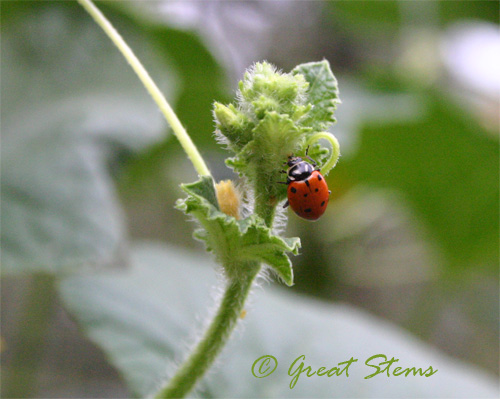
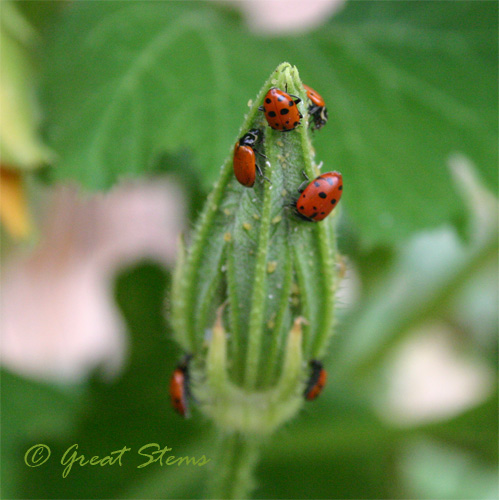
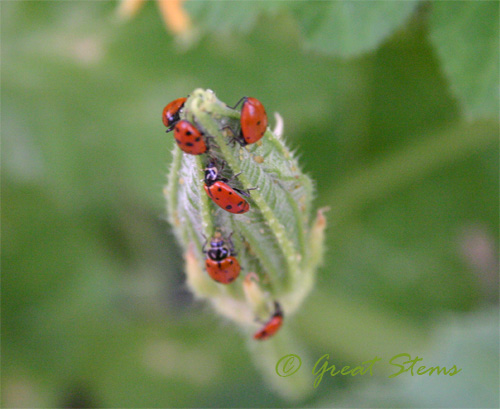
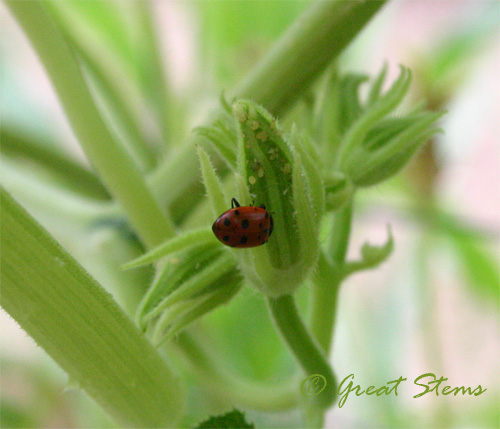
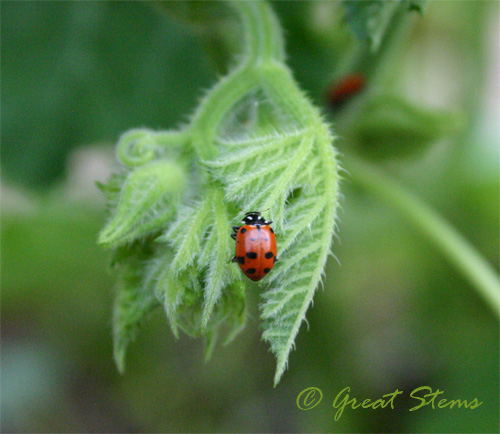
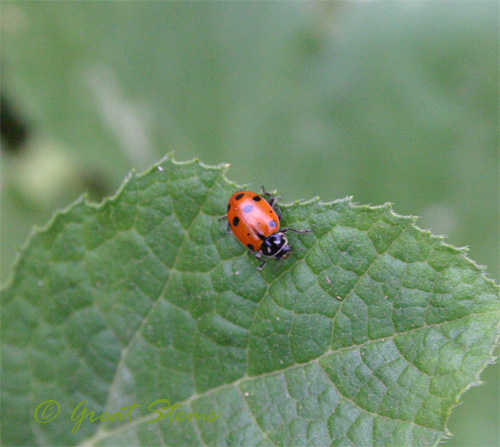
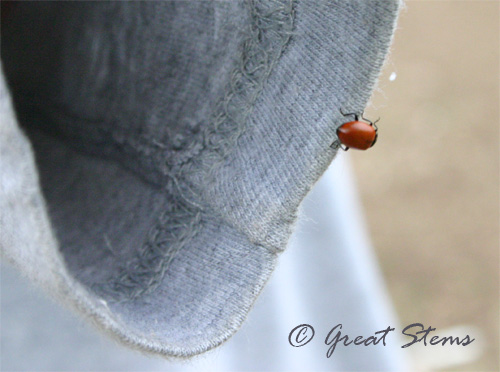
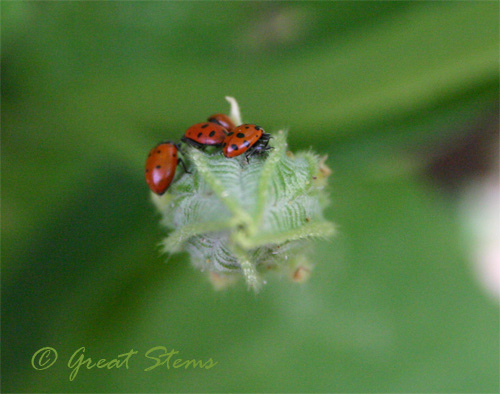
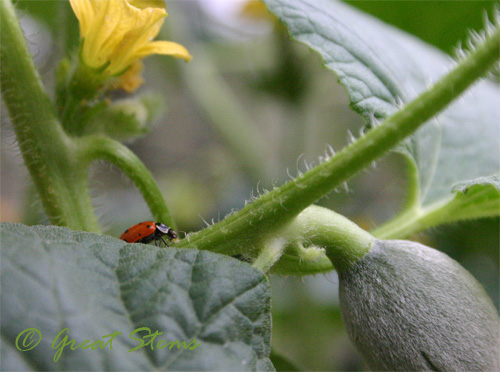
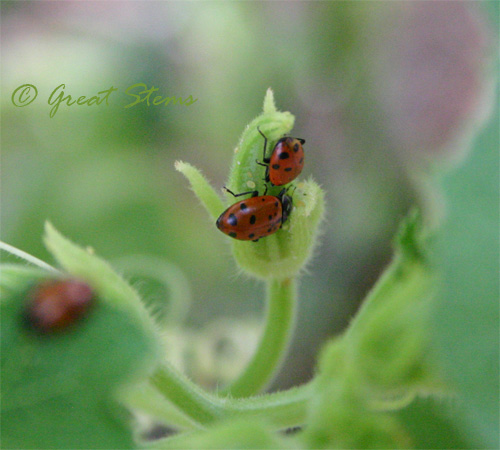
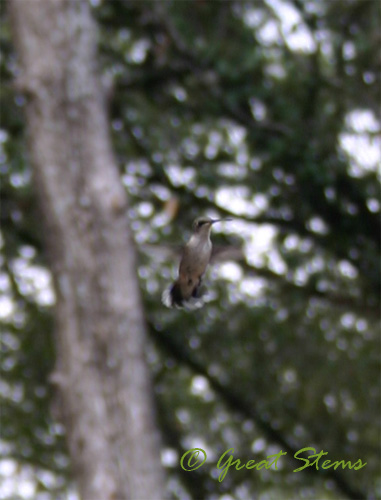
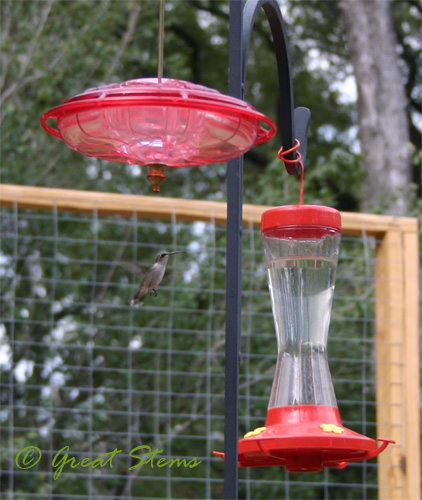
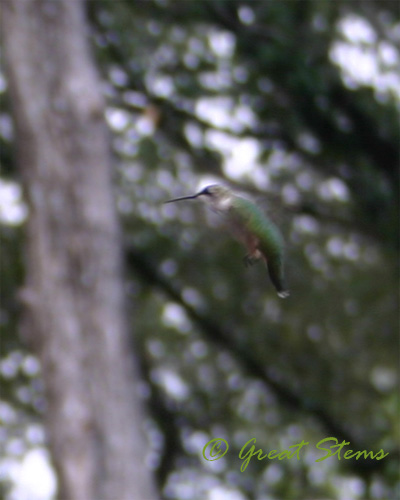
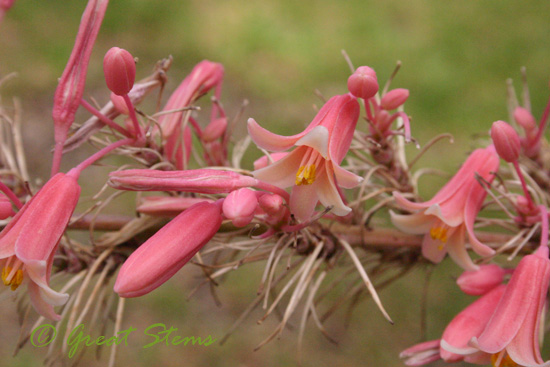
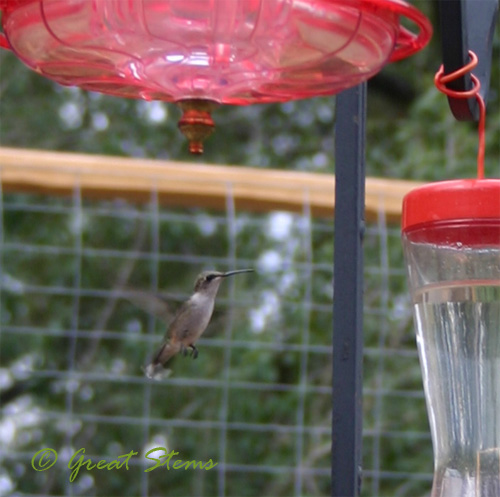
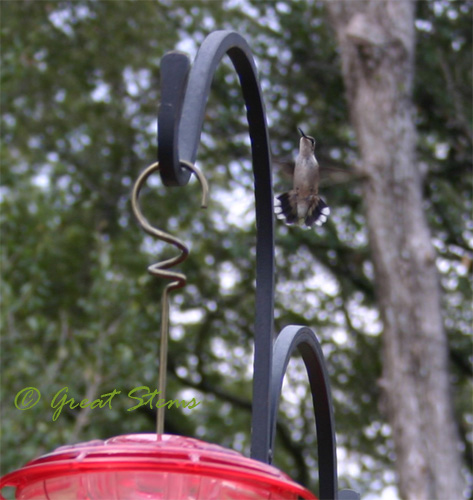
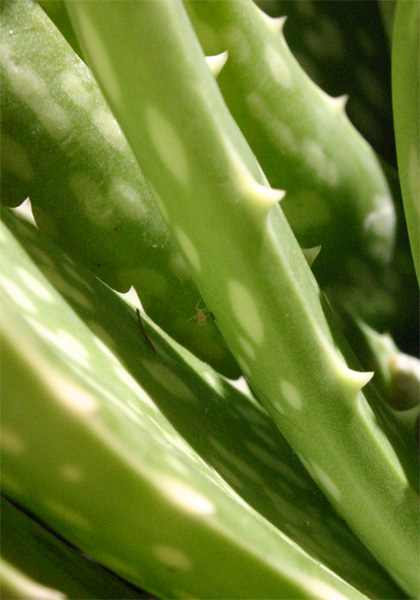










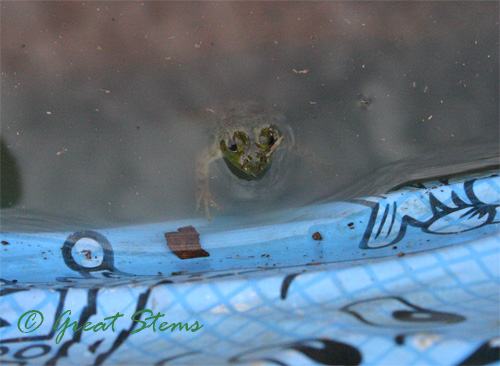
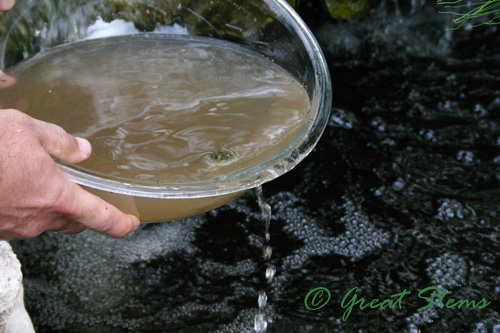
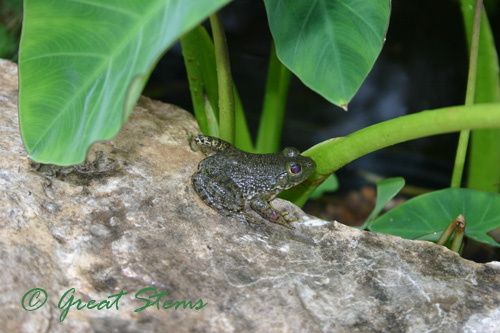
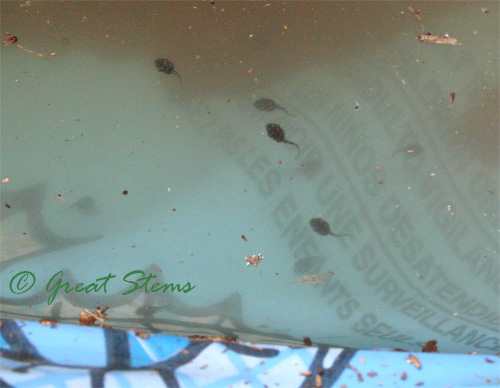
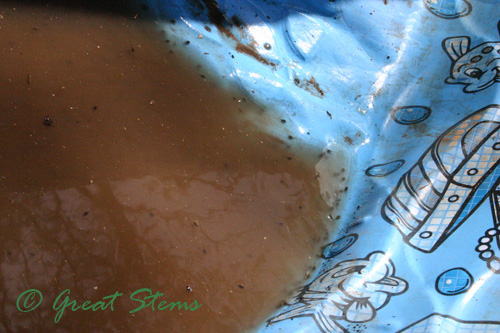
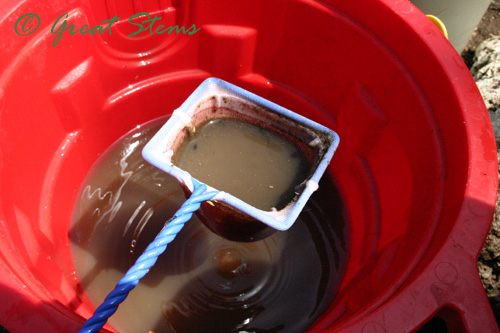
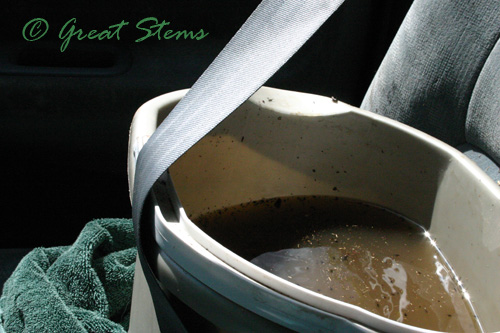
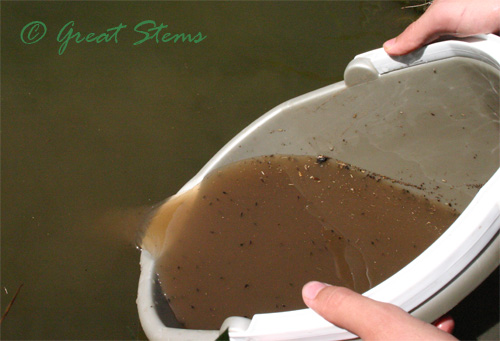 We made sure the tadpoles were swimming (not that we could have given them CPR or anything). They looked happy enough, and so were we.
We made sure the tadpoles were swimming (not that we could have given them CPR or anything). They looked happy enough, and so were we.